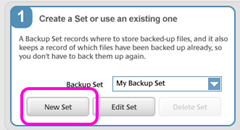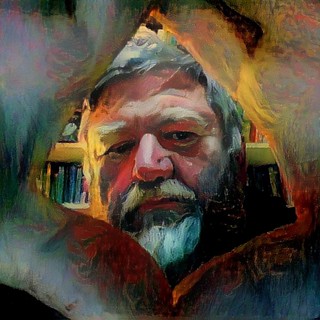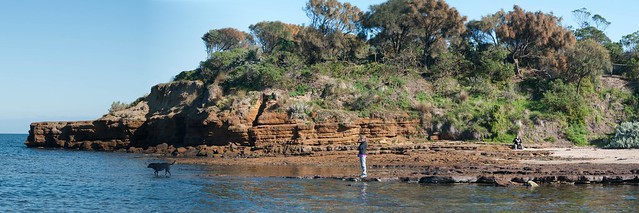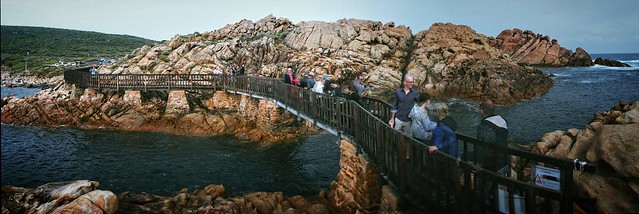There will come a time with any digital collection of photos that they need to be transferred to a new computer, perhaps a different operating system. If everything is well organised in one directory and subfolders, the whole set can be copied to an external USB harddrive and carried to the new computer and the copied onto it. Pretty simple! However if you check you might be surprised, what has happened to your previous edits, the tagging, star rating and album organization (collections for lightroom only users), they are much more difficult to ensure make that leap across computers. Now add the fact that not all photo collections are perfectly organized and often the photos are spread across several drives of across the local area network. Transferring photos might just become a nightmare!
 I rediscovered that picasa is still a wonderful tool to manage your photos (well jpeg libraries to be specific). While google abandoned picasa a few years ago, but you can still download it free from several popular download sites (just make sure the site is trustworth and doesn't come with unwanted blotware and especially viruses, worms or ransomware). In later version (approx. 2015 onwards) the picasa web component was changed to use google photos (and I strongly recommend not using the autobackup to the web feature). Google wants everyone to use their google photos system on the web, not do anything on your own computer which does not suit me and I assume will not really suit most people.
I rediscovered that picasa is still a wonderful tool to manage your photos (well jpeg libraries to be specific). While google abandoned picasa a few years ago, but you can still download it free from several popular download sites (just make sure the site is trustworth and doesn't come with unwanted blotware and especially viruses, worms or ransomware). In later version (approx. 2015 onwards) the picasa web component was changed to use google photos (and I strongly recommend not using the autobackup to the web feature). Google wants everyone to use their google photos system on the web, not do anything on your own computer which does not suit me and I assume will not really suit most people.
“For those who have already downloaded it, it will continue to work as it does today. But we will not be developing it further, and there will be no future updates.” ….google post on picasa user web forum
If you already have Picasa, you will know it has some good photo editing tools (its a pity snapseed never made it into the collection), is very fast to load photos, incredibly easy to understand and probably still has one of the best facial recognition features. It is not so great at enhancing RAW format photos (it can display and manage them). Further the “copy the photo directory” approach works well for picasa because it has a usually hidden file “picasa.ini” in each directory which stores the processes such as cropping etc. and basic organization, as well a simple start rating on each photo you have editing. When the the entire directory is copied onto the new computer and picasa reloaded it can read this file and render the photo as it was on the old computer. I discovered some time ago that this did not copy the facial recognition organization, but there was a complex workaround involving copying the hidden picasa database. I was pleasantly surprised to find the Tools/Back up picture feature in Picasa 3.9 (the last downloadable version) will also copy this extra information. I was using this backup approach for a different reason,  I knew it would search out the photos from where ever they are stored and put them into one big set (generally on an external USB drive for easy transfer).
I knew it would search out the photos from where ever they are stored and put them into one big set (generally on an external USB drive for easy transfer).
The approach is very simple and easy to follow but I figured I should prepare a simple step by step through the process anyway and post here, because I suspect A lot of people will want to do this as they ungrade computers over the next few years. You will need picasa 3.9 to get all the facial recognition transfered (otherwise see that workaround above). Get an external USB hard disk and plug it in (make a note of the drive letter it is given). Or alternatively you can find somewhere on your local area network with  lots of space (a NAS drive would be perfect albeit slow) Now Run Picasa on your old computer and using the tools menu find the back up picture option.
lots of space (a NAS drive would be perfect albeit slow) Now Run Picasa on your old computer and using the tools menu find the back up picture option.
This will bring up the backup dialogue panels on the bottom of the screen.  The default is normally set to somewhere on your hard drive, so you will need to select the New Set option. Then enter the address of the USB drive (or network location). I’ve put a 1 2 3 marks on things you need to address on the first panel to get your back set defined. Firstly give it a name, Secondly select on the Disk-to-disk backup type and using the choose button locate your destination. I had already created a sub-directory on my USB drive F: called transfer. Finally you need to define which files to backup. Picasa was never used to manage movie on this computer so I excluded them (to save space). If your picasa library is full of screen captures and or downloaded web graphics and you only want your
The default is normally set to somewhere on your hard drive, so you will need to select the New Set option. Then enter the address of the USB drive (or network location). I’ve put a 1 2 3 marks on things you need to address on the first panel to get your back set defined. Firstly give it a name, Secondly select on the Disk-to-disk backup type and using the choose button locate your destination. I had already created a sub-directory on my USB drive F: called transfer. Finally you need to define which files to backup. Picasa was never used to manage movie on this computer so I excluded them (to save space). If your picasa library is full of screen captures and or downloaded web graphics and you only want your  original camera files you can try the last option. Otherwise it may be safest to select All file types to backup. On the second panel you can set up selective folders to backup but when transfering computers just click on the select all button. The final step to start the backup is to press the Burn button on the far right hand side (this term comes from the days when you “burnt” CDs, which you still can do by the way) This process can take a while and there are no progress bars but a pop up screen does tell when it is complete.
original camera files you can try the last option. Otherwise it may be safest to select All file types to backup. On the second panel you can set up selective folders to backup but when transfering computers just click on the select all button. The final step to start the backup is to press the Burn button on the far right hand side (this term comes from the days when you “burnt” CDs, which you still can do by the way) This process can take a while and there are no progress bars but a pop up screen does tell when it is complete.
 Final take the USB drive (after using the safely remove and eject option in your operating system) over to your new computer. If you look in the directory created (transfer in my example) you will see there is a collection of files and sub-directories and one of the files should be PicasaRestore.exe. Click on this to run it. You can change the location of the restored files but most often the select to restore to original locations is fine for a an inter-computer transfer. Again this can take some time but you can see progress details of the files copied and setup steps and also another pop up when the transfer is complete.
Final take the USB drive (after using the safely remove and eject option in your operating system) over to your new computer. If you look in the directory created (transfer in my example) you will see there is a collection of files and sub-directories and one of the files should be PicasaRestore.exe. Click on this to run it. You can change the location of the restored files but most often the select to restore to original locations is fine for a an inter-computer transfer. Again this can take some time but you can see progress details of the files copied and setup steps and also another pop up when the transfer is complete.
When you start Picasa on the new computer it may take a some time in background to scan through the library and connect up all the faces and some organizational aspects. However you should find that your complete picasa library is fully and safely transferred and available on your new computer.








